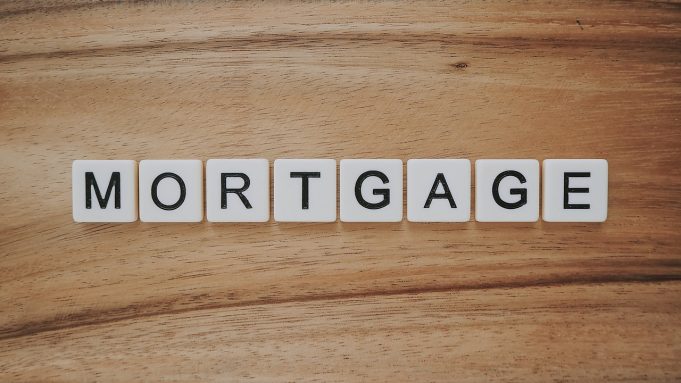Property investment and buy to lets remain a buoyant sector of the UK housing market.
Working as a professional landlord or buying a rental property can be a great way to increase your earnings!
The best way to ensure your buy to let properties prove as profitable as possible is to ensure you’ve got the best buy to let mortgage going.
Interest rates, exit penalties and fixed-term deals vary substantially across the market, so we’d always advise seeking guidance from the Revolution Brokers team.
Let’s run through the essentials of how buy to let mortgages work, what lenders will look for in your application, and how to find the most favourable borrowing offers!

Costs to Budget For in a Buy to Let Mortgage Application
The first step is to ensure you’ve got complete control over the costs of buying a rental property – and it’s not just the mortgage interest rates to consider:
- You’ll need to pay stamp duty on any new property investment.
- Costs include the surveyor’s fees and legal charges.
- As a landlord, you’ll require buildings and landlord’s insurance.
- You’ll need to declare your profits and pay tax on rental income.
- Properties require maintenance, repairs, and sometimes ground rent.
- If you rent through a letting agent, you’ll need to cover their fees too.
Therefore, it’s crucial to work out how much rent you could charge and make sure all of the other fees and interest costs still leave you with a decent profit margin for the effort.
Understanding Buy to Let Mortgage Interest
Next, you need to understand that buy to let mortgages are almost always on an interest-only basis. That is both good and bad:
- Monthly costs will be low since you’re only paying interest and none of the capital.
- You aren’t paying back the original loan value, so the actual mortgage amount remains payable at the end of the term.
You can find repayment mortgages, but they’re pretty unusual, and it’s usually only available through negotiation with a specialist BTL mortgage broker.
Other exit strategies include selling the investment property at the end of the loan, paying back the mortgage and keeping the remaining profit, or remortgaging through another buy to let loan.
Another factor with buy to let mortgages is that they’re a little more expensive and command a higher deposit than your typical residential mortgage.
Landlords must also pay additional stamp duty levies on second properties – many choose to incorporate a limited company to trade through to reduce the total tax exposure.
Deposits vary between lenders, but averages tend to be from 25% as a minimum up to 40% of the property value.
Lenders require a higher deposit because they need protection against the possibility that you’ll fail to keep up with the monthly payments.
Non-payment is a higher risk in a buy to let property since if the residence becomes vacant, you won’t be earning an income stream with which to pay the interest charged by your buy to let lender.
Interest Rates on UK Buy to Let Mortgages
Interest rates depend on many factors, including:
- How much you wish to borrow.
- Your financial circumstances.
- The anticipated rental income.
- What type of mortgage you apply for.
The lower the risk to the lender, the better the rates – therefore, if you have a larger deposit or an estimated rental income far above the monthly interest charges, you are more likely to be approved.
Buy to let mortgages work on several different bases, as with residential lending:
- Fixed-rate deals offer static interest charges, usually over one to five years.
- Variable-rate lending charges a changeable interest rate based on the Bank of England base rate.
- Discounted variable rate mortgages also use the base rate as a basis but then provide a discount, often to a capped level or up to a fixed number of percentage points.
It’s strongly advisable to use an independent buy to let broker to compare different deals. For example, a seemingly low-interest-rate deal might not be the most advantageous if the arrangement fees are very high!
Affordability Criteria For a Buy to Let Mortgage
Buy to let lenders always need to check out your affordability – and their policies can vary wildly.
One of the standard metrics is called the interest cover ratio (ICR).
That figure looks at how much rental income you can expect to receive from the property compared to the mortgage interest costs.
The interest is also stress-tested, which means the lender will use a nominal rate, commonly 5.5%, to make sure you’d still be able to afford the mortgage if interest rates were to rise.
Buy to let lenders will want to see:
- Rental income of 125% of the mortgage interest costs as an absolute minimum.
- Cover of up to 145% if you’re a higher-rate taxpayer, or they have a stricter risk assessment policy.
Suppose you’re looking at buying a rental property. In that case, you can check out the average rental income for similar investment homes in the area and make sure you’d be making sufficient income to cover the mortgage costs to this extent.
Applying For a Buy to Let Mortgage as a First-Time Investor
Undoubtedly, it’s easier to secure a competitive buy to let mortgage if you’re a seasoned investor. However, you might also find that some lenders have rules about the maximum number of properties they’ll mortgage for one person or business.
Therefore it’s always worth consulting Revolution Brokers to compare portfolio mortgages or other solutions that may prove more affordable.
Likewise, it can be tricky to find a mortgage if you’re looking to purchase a rental investment for the first time and don’t have any landlord experience to fall back on.
You can get a BTL mortgage as a first-time landlord, but again we’d advise you to contact an independent broker before making any applications.
Lenders will typically ask for a larger deposit. They may charge higher interest rates – but if you don’t own any other properties, you do have the bonus of making savings on the stamp duty payable.














